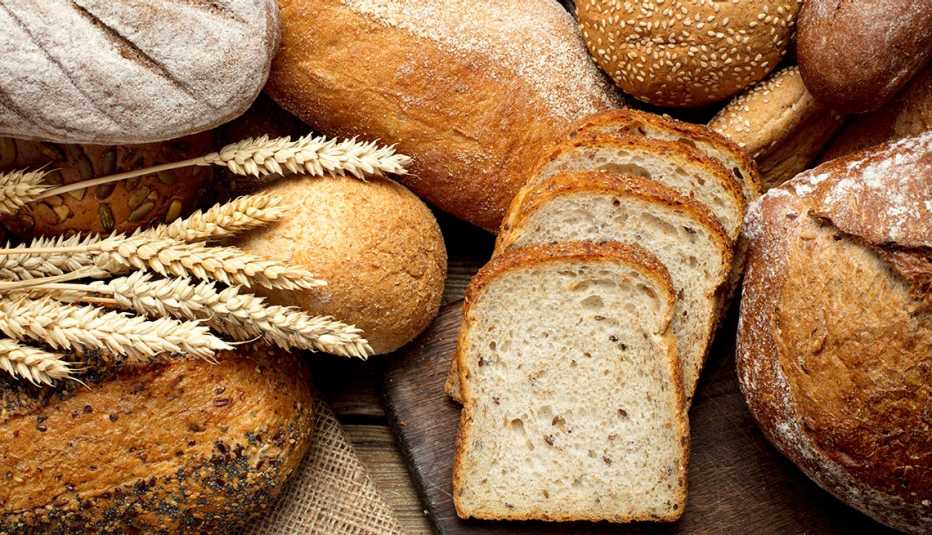AARP Hearing Center


Maybe it's because the pandemic has us all craving the comfort of carbs, but baked goods like bread are a top driver of supermarket sales today, and many grocers have begun building in-store bakeries and increasing our purchase options. But while that's good news for sandwich lovers, it's also potentially confusing: Marketers love to pack their labels with all manner of vague health claims. Here we break bread down into simple terms so you can bookend your chicken salad healthfully and easily.
On the bread package
1. Wheat bread: “Wheat” doesn't mean it's a whole-grain bread. Look for the words “100% whole wheat” or “100% whole grain.”
2. Multigrain: “Multigrain” (or “7-grain,” “12-grain” and the like) also could just mean different kinds of refined grains. And as for “natural” and “artisan,” they're imprecise.
3. Gluten-free: If you are not sensitive to gluten, there may not be any health benefit to switching to these breads, which can be expensive, less nutritious and come in smaller loaves.
4. Made with ancient grains: This refers to such whole grains as millet, amaranth, teff, kamut and spelt. Breads made with these grains may be healthier, or they may be mixed with less-healthy refined flours. Check the ingredients label.
5. Diet: Reduced-calorie bread often means fewer nutrients and more fillers, like cellulose. Avoid “diet” labels and simply choose a bread under 80 calories and with at least 2 grams of fiber per slice.
By the slice
6. Color: Low-nutrition breads are sometimes dyed brown to look healthy, and some white breads may contain healthier whole-grain flours. Read the label to determine nutritional value.
Extra tip
7. Many of the healthiest breads in a grocery store are kept in the freezer section. There you'll find whole-grain sprouted breads that are made without preservatives and so are more likely to spoil quickly. Freeze them when you get home.
On the nutrition label
8. Serving size: Most bread packages list a serving size as one slice, but we typically consume two slices at a time. If you're having a PB&J for lunch, you'll need to double what's on the label to see the number of calories, fats and carbs you're consuming.
9. Fiber and total carbohydrates: “The simplest way to spot a good bread is to look at total carbohydrates and fiber,” says Los Angeles–based nutritionist Ilana Muhlstein. “You want to have at least one gram of fiber per 10 grams of total carbs. The more fiber the better.”
10. Azodicarbonamide: Many breads include multisyllable ingredients like azodicarbonamide, a dough conditioner that some fast-food chains have removed from their breads over health concerns.
11. High-fructose corn syrup: Yeast needs sugar to create the carbon dioxide that makes the bread rise. But there's one sweetener you should avoid: high-fructose corn syrup. Studies have linked it to diabetes, fatty liver, high blood pressure and obesity.
Kimberly Rae Miller writes on health and wellness for a wide array of publications.


































































More on health
6 Easy, Healthy Meals for Your Fall Camping Trip
Ideas and recipes that go beyond hot dogs on a stickWhat to Eat When You're Working Out More
Is exercising making you hungry all the time? Here's what to know — and how to eat smartThe Truth About Meat in Your Diet
A group of researchers recently claimed there is no reason to limit red or processed meats. What's the real story?